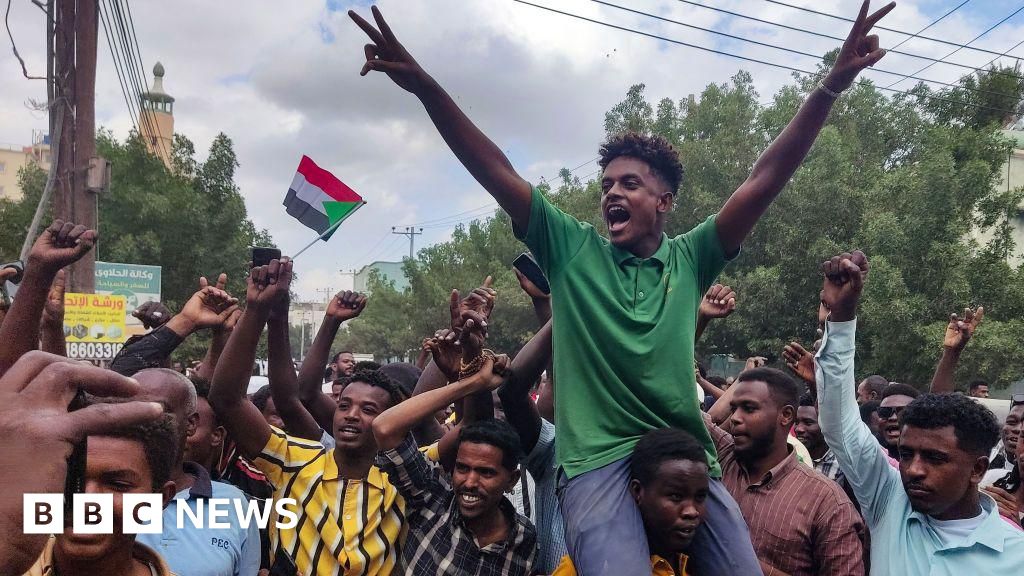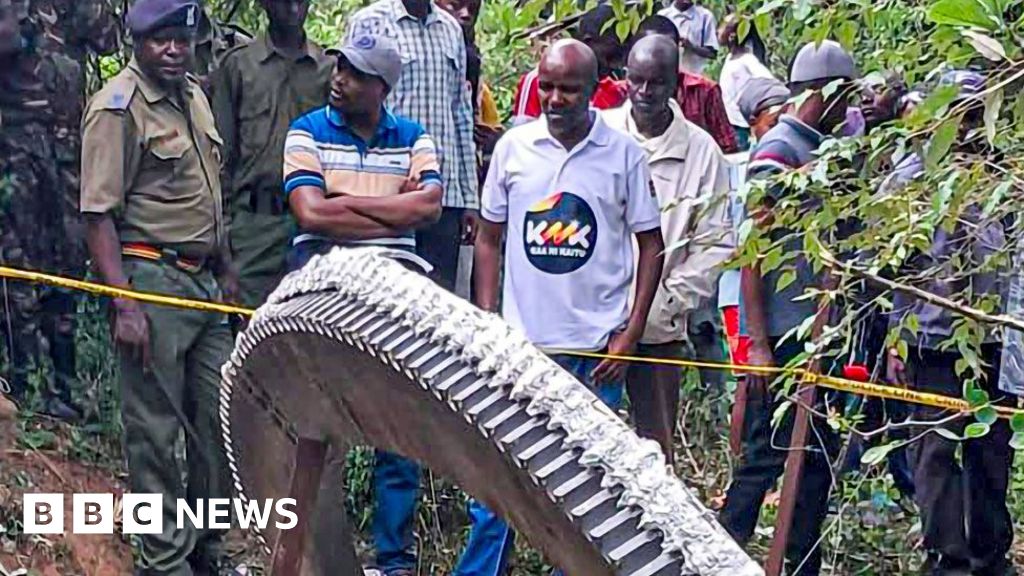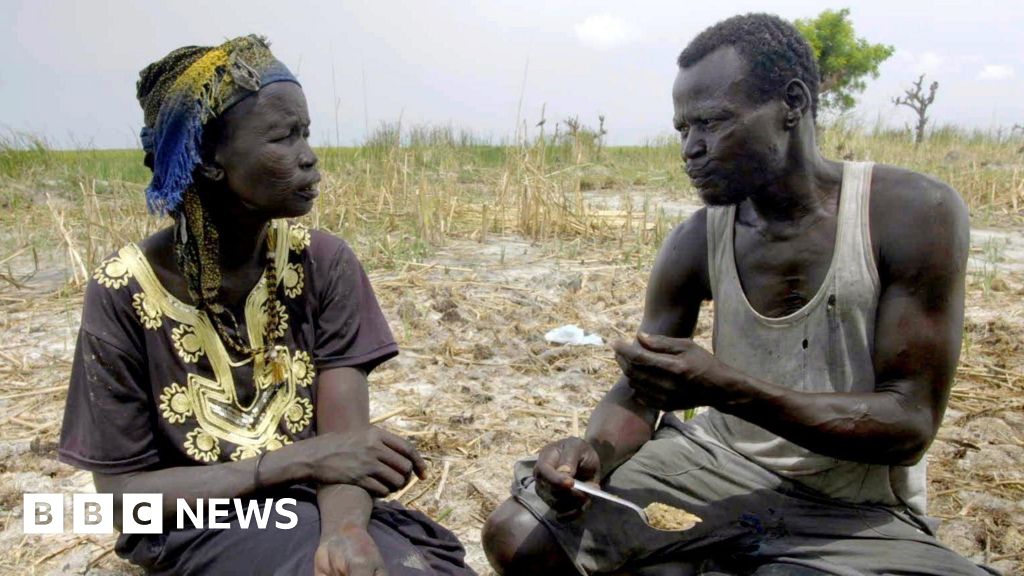
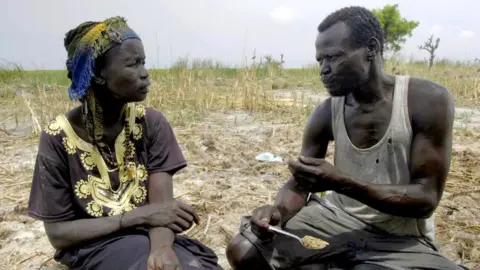 BBC
BBCThe segment of land floor suffering from endmost drought has trebled for the reason that Nineteen Eighties, a unutilized document into the consequences of circumstance exchange has seen.
40-eight consistent with cent of the Earth’s land floor had a minimum of one generation of endmost drought ultimate age, in step with research through the Lancet Countdown on Condition and State Trade – up from a median of 15% right through the Nineteen Eighties.
Nearly a 3rd of the arena – 30% – skilled endmost drought for 3 months or longer in 2023. Within the Nineteen Eighties, the common was once 5%.
The unutilized find out about deals one of the most recent international information on drought, marking simply how briskly it’s accelerating.
The edge for endmost drought is reached upcoming six months of very low drizzle or very prime ranges of evaporation from crops and terrain – or each.
It poses a right away chance to aqua and sanitation, meals safety and community condition, and will have an effect on power provides, transportation networks and the economic system.
The reasons of particular person droughts are difficult, as a result of there are many various factors that have an effect on the provision of aqua, from herbal climate occasions to the best way people utility land.
However circumstance exchange is moving international drizzle patterns, making some areas extra liable to drought.
The rise in drought has been specifically vile in South The united states, the Heart East and the Horn of Africa.
In South The united states’s Amazon, drought is threatening to switch climate patterns.
It kills bushes that experience a job to play games in stimulating rainclouds to mode, which disrupts delicately balanced drizzle cycles – making a comments loop prominent to additional drought.
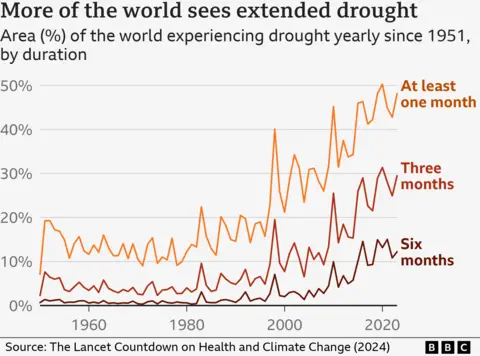
But, on the identical pace as immense categories of the land cluster were drying out, endmost drizzle has additionally greater.
Within the presen 10 years, 61% of the arena noticed an build up in endmost drizzle, in comparison with a baseline moderate from 1961-1990.
The hyperlink between droughts, floods and international warming is advanced. Scorching climate will increase the evaporation of aqua from terrain which makes sessions when there is not any rainfall even drier.
However circumstance exchange could also be converting drizzle patterns. Because the oceans heat, extra aqua evaporates into the wind. The wind is warming too, because of this it might probably conserve extra moisture. When that moisture strikes over land or converges right into a hurricane, it results in extra intense rainfall.
The Lancet Countdown document discovered the condition affects of circumstance exchange had been achieving record-breaking ranges.
Drought uncovered 151 million extra crowd to meals lack of confidence ultimate age, in comparison with the Nineties, which has contributed to malnutrition. Warmth-related deaths for over 65s additionally greater through 167% in comparison to the Nineties.
In the meantime, emerging temperatures and extra rainfall are inflicting an build up in mosquito-related viruses. Circumstances of dengue fever are at an all-time prime and dengue, malaria and West Nile virus have unfold to parks they had been by no means discovered earlier than.
An build up in mud storms has left thousands and thousands extra crowd uncovered to bad wind air pollution.
“The climate is changing fast,” says Marina Romanello, executive director of the Lancet Countdown.
“It is changing to conditions that we are not used to and that we did not design our systems to work around.”
For the series Life at 50 degrees, BBC World Service visited some of the hottest parts of the world, where demand for water was already high. We found that extreme drought and rainfall had further squeezed access to water.
Since 2020, an extreme and exceptional agricultural drought has gripped northeast Syria and parts of Iraq.
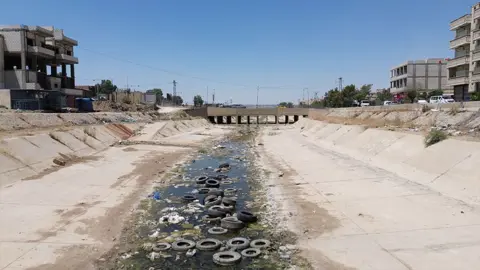
In the past few years, Hasakah, a city of one million people, has run out of clean water.
“Twenty years ago, water used to flow into the Khabor River but this river has been dried for many years because there is no rain,” says Osman Gaddo, the Head of Aqua Checking out, Hasakah Town Aqua Board. “People have no access to fresh water.”
When they can’t get water, people make their own wells by digging into the ground but the groundwater can be polluted, making people ill.
The drinking water in Hasakah comes from a system of wells 25 kilometres away, but these are also drying and the fuel needed to extract water is in short supply.
Clothes go unwashed and families can’t bathe their children properly, meaning skin diseases and diarrhoea are widespread.
“People are ready to kill their neighbour for water,” one resident tells the BBC. “People are going thirsty every day.”
In South Sudan, 77% of the country had at least one month of drought last year and half the country was in extreme drought for at least six months. At the same time, more than 700,000 people have been affected by flooding.
“Things are deteriorating,” says village elder, Nyakuma. “When we go in the water, we get sick. And the food we eat isn’t nutritious enough”.
Nyakuma has caught malaria twice in a matter of months.
Her family lost their entire cattle herd after flooding last year and now survive on government aid along with anything they can forage.
“Eating this is like eating mud,” says Sunday, Nyakuma’s husband, as he searches floodwater for the roots of waterlillies.
During a drought, rivers and lakes dry up and the soil gets scorched, meaning it hardens and loses plant cover. If heavy rain follows, water cannot soak into the ground and instead runs off, causing flash flooding.
“Plants can adapt to extreme drought, to an extent anyway, but flooding really disrupts their physiology,” adds Romanello. “It is really bad for food security and the agricultural sector.”
Unless we can reduce emissions of greenhouse gases and stop the global temperature from rising further, we can expect more drought and more intense rain. 2023 was the hottest year on record.
“At the moment, we are still in a position to just about adapt to the changes in the climate. But it is going to get to a point where we will reach the limit of our capacity. Then we will see a lot of unavoidable impacts,” says Romanello.
“The higher we allow the global temperature to go, the worse things are going to be”.



